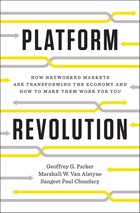After a decade of maintaining its promise to remain advertisement-free, WhatsApp has announced its first foray into in-app advertising. This marks a watershed moment not just for the messaging platform, but for the broader digital communication landscape. The decision represents a fundamental shift from the privacy-first, utility-focused messaging service that once distinguished WhatsApp from its competitors.
The Network Effect Prison
WhatsApp's introduction of ads reveals the power and peril of network effects in digital platforms. With over 2 billion users globally, the app has achieved something approaching infrastructure status in many countries. In Brazil, India, and much of Europe, WhatsApp isn't just a messaging app—it's the primary digital communication channel for everything from family conversations to business transactions.
This ubiquity creates what economists call "switching costs" that go far beyond technical considerations. Users find themselves locked into platforms not by choice, but by necessity. The prospect of convincing entire social and professional networks to migrate to alternative platforms becomes practically impossible, even when users are dissatisfied with changes.
The Monetization Imperative
WhatsApp's ad introduction wasn't unexpected—it was inevitable. When Meta acquired the company for $19 billion in 2014, the pressure to generate revenue from the massive user base was always going to materialize. The company's original ad-free model was sustainable only during its growth phase, funded by venture capital and acquisition premiums.
The new advertising model focuses on the "Updates" section, used by 1.5 billion daily users. Meta promises that personal messages will remain encrypted and ad-free, but this represents a careful balance between monetization and user retention. The company understands that too aggressive an approach could trigger user exodus, as happened with previous controversial policy changes.
Privacy in the Age of Targeted Advertising
WhatsApp's approach to advertising data collection reveals the complex relationship between privacy and monetization in modern digital platforms. The company claims it will use only location and device language data for targeting, explicitly avoiding message content and contact information.
This represents a more restrained approach compared to traditional social media advertising, but it still marks a departure from WhatsApp's original privacy-first philosophy. The challenge lies in maintaining user trust while generating sufficient revenue to justify Meta's investment.
The Alternative Messaging Landscape
The introduction of ads highlights the limited options available to users seeking truly private, ad-free communication. Signal remains the most prominent alternative, offering robust encryption and a non-profit structure that theoretically protects against commercialization pressures. However, Signal faces the classic chicken-and-egg problem of network effects—it's only useful if your contacts also use it.
Matrix and XMPP represent federated alternatives that could theoretically solve the network lock-in problem, but both face technical and usability challenges that limit mainstream adoption. The complexity of self-hosting and managing federated systems puts them beyond the reach of most users.
The Broader Implications
WhatsApp's transformation reflects a broader trend in the technology industry: the gradual erosion of the "free" internet model. As venture capital becomes more expensive and growth-at-all-costs strategies face scrutiny, platforms are increasingly forced to monetize their user bases directly.
This shift raises fundamental questions about digital infrastructure. Should essential communication tools be treated as public utilities, funded through taxation or subscription models rather than advertising? The current model effectively makes users the product, with their attention and data serving as the commodity being sold to advertisers.
The Path Forward: Rethinking Digital Communication
The WhatsApp advertising announcement should serve as a wake-up call for both users and policymakers. The concentration of communication infrastructure in the hands of a few large corporations creates systemic risks that extend beyond privacy concerns.
Several potential solutions deserve serious consideration:
Subscription Models: Direct payment for communication services could eliminate the need for advertising-based monetization. However, this requires overcoming user resistance to paying for previously "free" services.
Federated Protocols: Open standards that allow interoperability between different messaging platforms could reduce network lock-in effects. This would require significant technical coordination and potentially regulatory intervention.
Public Infrastructure: Treating digital communication as a public utility, similar to postal services or telecommunications infrastructure, could ensure universal access without commercial pressures.
Regulatory Intervention: Antitrust enforcement and data portability requirements could reduce the power of dominant platforms and enable more competitive markets.
Conclusion: The Price of "Free"
WhatsApp's introduction of advertising marks the end of an era in digital communication. What began as a simple, ad-free messaging service has evolved into another node in Meta's vast advertising network. This transformation was perhaps inevitable given the economic realities of operating at global scale, but it highlights the fundamental tension between user interests and shareholder value in platform capitalism.
The real question isn't whether WhatsApp will show ads—it's whether we can build sustainable alternatives that prioritize user needs over advertising revenue. The window for such alternatives may be closing as network effects become more entrenched, making the current moment critical for both technological innovation and regulatory intervention.
The price of "free" digital services has always been hidden in data collection and attention monetization. WhatsApp's advertising introduction simply makes this price more visible, forcing users to confront the true cost of the platforms they've come to depend on. Whether this awareness translates into meaningful change will depend on our collective willingness to prioritize long-term digital autonomy over short-term convenience.














